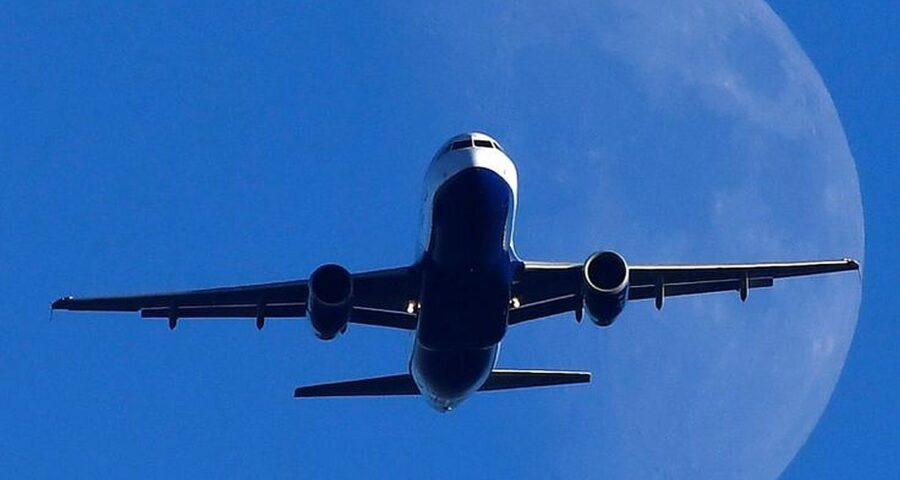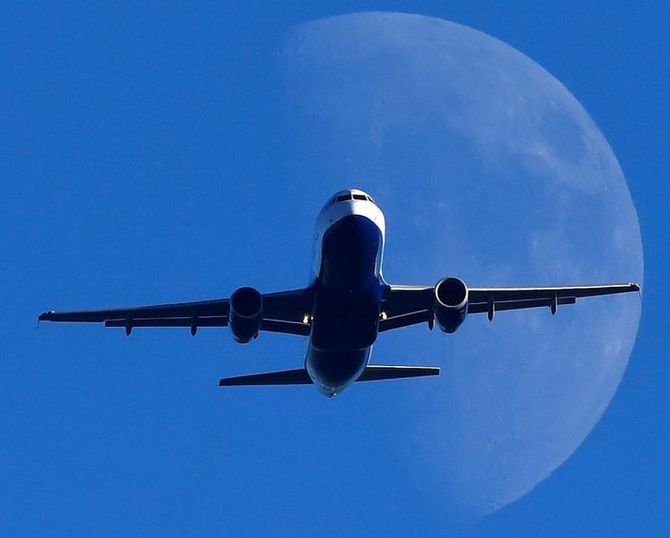The short-to-medium term outlook for the sector remains under cloud as it continues to face structural headwinds.
Nikita Vashisht reports.
The Indian aviation sector is on the cusp of a change as airlines look to induct a record number of aircraft.
This, analysts said, will put the sector on a growth runway, though keeping it viable for only long-term investors.
According to Vinit Bolinjkar, head of research at Ventura Securities, expectations of strong air traffic, coupled with low penetration, is the prime reason for a solid long-term outlook.
“India’s air traffic is expected to grow at 25-30 per cent over the next three years.
“Indian airlines are building their capacities to support the growing domestic demand, as well as tap international routes to expand their networks.
“All of this is the reason for record aircraft orders by airlines,” he said.
Air India, recently, placed an order for 470 aircraft, which is the highest-ever in the aviation industry globally.
Going ahead, industry body CAPA, or Centre for Aviation, expects other domestic airlines, led by IndiGo (owned by InterGlobe Aviation), to place orders for 1,000-1,200 aircraft in the coming two years.
“The deals in the Indian airline industry augurs well for creating an international hub in India, which is the world’s third largest, and fastest growing aviation market in the world.
“We believe rising passenger traffic, growing middle class and disposable incomes, rich demographic dividend, and government’s focus to improve the aviation infrastructure in the country under the regional air connectivity scheme UDAN are keeping the sector’s prospects attractive,” said Manish Chowdhury, head of research at Stoxbox.
Word of caution
That said, the short-to-medium term outlook for the sector remains under cloud as it continues to face structural headwinds.
For one, aviation turbine fuel (ATF) price, derived from crude oil, and accounting for 35-50 per cent of an airline’s operating cost, may rear its head upwards in the latter part of 2023, analysts said.
Over the past one year, ATF prices have risen 30.5 per cent in Delhi, and 31.6 per cent in Mumbai.
Analysts believe high crude oil price has not been factored-in by the markets.
Any upswing, they said, would trigger sell-off in related shares.
Brent crude price has stayed below $90 per barrel over the past one quarter.
That apart, the industry is yet to see sustainable profits.
“A linear profit growth is unlikely for the Indian aviation players as high oil prices hit the industry every two-three years.
“The issue may be resolved only when smaller players are eliminated and the industry is managed by two-three big players,” said G Chokkalingam, founder and chief investment officer at Equinomics Research.
During the October-December quarter of FY23, IndiGo posted net profit of Rs 1,422 crore, while Vistara posted it’s first-ever profit in the December 2022 quarter.
Air India, too, is expected to post first-ever operational profit in FY23.
However, as per the Union Ministry of Civil Aviation, the industry incurred a loss of Rs 12,479 crore in FY21, and Rs 11,658 crore in FY22.
Against this backdrop, Chokkalingam suggests long-term investors can buy IndiGo after 10-15 per cent correction. Chowdhury of Stoxbox, too, prefers IndiGo as it is the dominant player in the growing Indian aviation market.
“While IndiGo remains better placed than SpiceJet and Jet Airways (within the listed universe), AI’s resurrection will weigh on IndiGo’s near-term outlook.
“That said, the economics will play out in the long-term with margins and market share sustaining for dominant players,” Chokkalingam said.
Thus far in 2023, IndiGo has declined 7 per cent at the bourses, while SpiceJet and Jet Airways have slipped 8.4 per cent and 7.8 per cent, respectively.
In comparison, the benchmark Sensex index has dipped 1.9 per cent.
Source: Read Full Article


